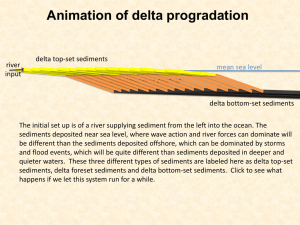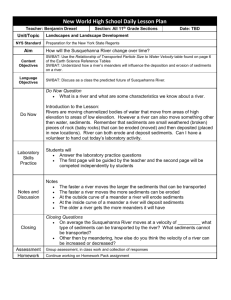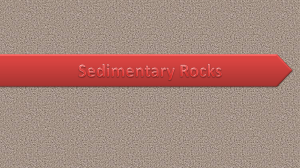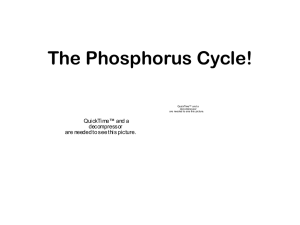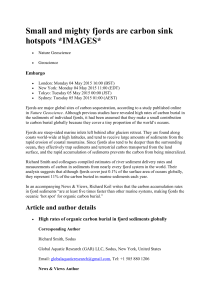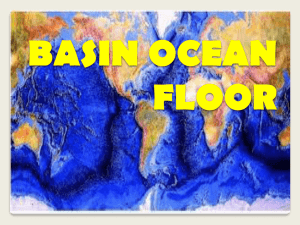EarthLabs Climate Detectives Lab 6: Analyzing
advertisement
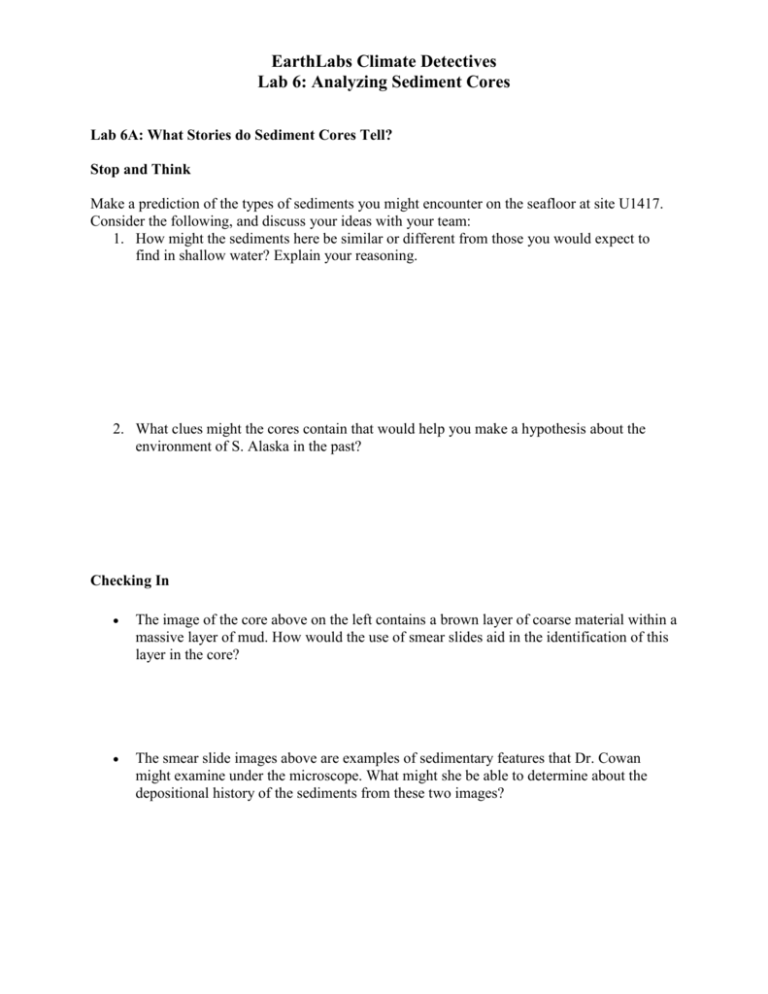
EarthLabs Climate Detectives Lab 6: Analyzing Sediment Cores Lab 6A: What Stories do Sediment Cores Tell? Stop and Think Make a prediction of the types of sediments you might encounter on the seafloor at site U1417. Consider the following, and discuss your ideas with your team: 1. How might the sediments here be similar or different from those you would expect to find in shallow water? Explain your reasoning. 2. What clues might the cores contain that would help you make a hypothesis about the environment of S. Alaska in the past? Checking In The image of the core above on the left contains a brown layer of coarse material within a massive layer of mud. How would the use of smear slides aid in the identification of this layer in the core? The smear slide images above are examples of sedimentary features that Dr. Cowan might examine under the microscope. What might she be able to determine about the depositional history of the sediments from these two images? What other features, besides the identification of minerals, can be determined by smear slide analysis? Stop and Think 3. Diatoms thrive when there is an ample amount of nutrients and sunlight available. When would you expect to find more favorable nutrient & sunlight conditions in the upper ocean, during periods of glacial advance or retreat? Explain. 4. As you have been learning, the amount of ice on land has cycled through several periods of advance and retreat over the past 10 million years. What types of sediments would you expect to find during periods with more ice on land? What types of sediments would you expect to find during periods of less ice? Explain your reasoning. Part B: Observations from the Core Lab: Gathering Evidence to Solve a Climate Mystery Stop and Think 1. Based on your observations of the sedimentary features in core U1417B, what can you infer about the environmental conditions in S. Alaska during the period when these sediments were deposited? 2. Using your initial observations from the core, make a hypothesis about Earth's climate in S. Alaska during the time the sediments were being deposited. 3. Were all the sediments in this section of core were all deposited under the same climatic conditions? Explain your reasoning, citing evidence from the core. Part C: Dating the Sediment Core: More Evidence to Support Your Hypothesis Checking In 1. How many magnetic field reversals have occurred in the past 3 million years? Do magnetic field reversals occur in regular time intervals? 2. When was the last time the Earth's magnetic field reversed direction? 3. Refer back to your geologic time scale from Lab 5. Which geologic periods are associated with the Matuyama-Gauss reversal that occurred ~ 2.6 million years ago? What geologic epochs occur at this magnetic field reversal? . Stop and Think 1. According to the data, what is the approximate age of the sedimentary sequence you described in the Core Lab Visualization, from ~260 to ~ 360 meters below the seafloor? 2. During which geologic epoch(s) was this sedimentary sequence deposited? 3. Refer back to the geologic timescale you created in Lab 5. What significant events were happening on Earth at this time? 4. What additional information might be needed to verify the ages of the sediments? Part D: Observations from the Core Lab: Working in the Paleontology Lab Stop and Think 1. How do the types and abundance (total #s) of microfossils change throughout the length of the composite core? 2. Based on microfossil and paleomagnetic data, what is your best estimate for the relative ages of the sediments from site U1417B? Support your answer with evidence. 3. Based on microfossil and paleomagnetic data, what is your best estimate for the relative ages of the sediments from site U1417B? Support your answer with evidence from the core. Checking In • Oxygen-18 and Oxygen-16 are two important isotopes of oxygen. What is the difference between these isotopes? • How does the composition of oxygen in the ocean change during an ice age? • How can scientists determine the composition of oxygen in the ocean at any given point in geologic history? • Scientists graph the ratio of 18O/16O as a proxy for past sea surface temperature (SST). Would you expect this ratio to be higher during a glacial period, or interglacial period? Explain. Stop and Think 1. Compared to modern levels, how has the delta 18O record changed over the past 8 million years? 2. How has the sea surface temperature (SST) of the world's oceans changed over the past 8 million years? 3. What is the relationship between delta 18O values and sea surface temperature (SST)? 4. Based on the ages of the sediments in core U1417B, how were the delta 18O values in the world's oceans changing at the time these sediments were deposited? 5. What does the delta 18O record tell you about how the climate may have been changing in S. Alaska when these sediments were being deposited .



